Displaying items by tag: cloud
New Intelligence, New Value, New Skills — #GartnerAPPS
A Premier IT Innovation Event
The Gartner Application Innovation & Business Solutions Summit (AIBSS) is an event hosted for enterprise leaders and IT teams. Analysts and sponsors showcase solutions and presentations tailored to every level, from C-suite to Engineer. This year's theme, "New Intelligence, New Value, New Skills," encapsulates this time of technological disruption, advancement, and expectation.
TSRI embodies this theme in many ways, but with a few important caveats. With legacy application modernization, you keep what's good from the existing business intelligence, add to the existing value by readying the system for innovation in modern languages, and enable companies to bring on new IT skills while retaining the skills of the SMEs through documentation and strategic operational change management. You end up clearing away the debt, enabling innovation, and future-proofing your organizational IT.
TSRI Presents: Modernizing Legacy Tech for the Cloud Era with Automation
The TSRI team showcased these capabilities with a speaking session on the Exhibit Showcase Theater stage. Scott K Pickett, TSRI's Vice President of Service and Product Delivery, delivered a compelling presentation titled "Modernizing Legacy Tech for the Cloud Era with Automation." The session was very well attended, with decision-makers from every industry represented at the event, showing how organizations in every industry are fighting this battle.
Scott presented strategies for transforming outdated systems into modern cloud-native, on-prem, and hybrid solutions, often achieving an 80-90% reduction in Total Cost of Ownership (TCO) for applications. Showcasing TSRI's proprietary formal methods, rules-driven and model-based solution, JANUS Studio®, he shared how we leverage the structure of rules-based AI to document, transform, assess, and refactor software applications. Scott also discussed the importance of early and ongoing testing and shared methods for automating tests, environment setup, and integration. He promoted many hybrid and step-wise solutions to plan and ensure a graceful migration strategy with the lowest risk. The packed room was collectively nodding their heads.
Key Themes from the Summit
As sponsors, we were also eager to learn while there. Here are some themes from the event presentations that stood out.
Evolving Modernization Drivers: Traditional motivations for modernization, such as TCO reduction, limited agility, aging infrastructure, and security, remain prevalent. However, as this innovative time in tech gains momentum, cutting-edge technologies (including many types of AI), enhanced user experiences, and privacy and security compliance are gaining importance for businesses and public sector servants trying to best serve their customers and constituents in this fast-paced and unpredictable world.
That said, these emerging technologies and requirements can be painful or seemingly impossible to implement for many enterprise-level and foundational organizations with massive and aging IT systems. These organizations cannot turn on a dime anymore simply because they have decades of millions and billions of people and organizations' data at stake in deeply rooted systems and also mature and unique business rules to manage their operations. To organizations holding that responsibility, holding steady can seem like the most essential thing in the world until it becomes a real problem. Stakeholders in these legacy systems are increasingly looking for solutions to adapt, catch up, and reframe these technical debts into contemporary IT programs.
These evolving needs are driving many organizations to prioritize their modernization investments. Partnering with seasoned modernization experts is crucial for achieving the best outcomes.
Understanding Applications: One of the main themes we heard from both presentations and our conversations at the booth is how many participants work for organizations that struggle to understand their applications well enough to maintain them and decide what to modernize, replace, rewrite, or retire.
Joseph Prikhodko, Business Development Manager at TSRI, described his conversations at the booth this way, "A lot of potential customers just need to know what is in their code and how it interacts with different external components. Documenting the code is crucial for them, so when new developers come in, they don't have to spend months training to learn these old and complex systems. The engineers and developers familiar with these legacy technologies are retired and difficult to replace."
Strategic Modernization Planning: Some analysts presented on strategic modernization planning, which is a critical element of TSRI's successful approach. We know that aligning IT strategies with executive and business goals is essential for organizations to recognize modernization as a feasible path to unlock higher customer satisfaction and business growth. Our comprehensive transformation planning workshops guide customers through strategic modernization planning at the beginning of a project, including defining goals and prioritizing needs across stakeholders. We start with an in-depth documentation and assessment phase to understand and evaluate the business and mission-critical systems, their internal mainframe connections, and external dependencies.
Customer-Centric Planning: We also work with customers to identify and meet compliance requirements (such as a hybrid solution when the data needs to remain on-premise or by removing security vulnerabilities through automated refactoring.) We take in customer feedback throughout the assessment, and from there we help develop a step-wise deployment roadmap, outlining plans for cloud, hybrid, and on-prem architectures and deployment strategies. Effective data migration planning is essential, as is defining an executable plan for rigorous testing throughout the project to ensure quality and reliability and to prove success early on. We also consult on post-transformation change management, pulling from 3 decades of successful modernization projects in production. The process culminates in a graceful go-live, minimizing business disruptions and ensuring smooth operational transitions.
AI-Powered Growth and Innovation: Many companies are navigating the Hype Cycle™ (as defined by Gartner) as they look to adopt AI technologies, often experiencing excitement and disillusionment. The reality is that AI technologies are best leveraged as complementary tools to augment human capabilities rather than replace human work, and the trends in business AI adoption are reflecting that as more companies work to define responsible usage and governance appropriate to their industry. Artificial intelligence excels in automation, pattern recognition, simple decision-making, and logic-driven creativity. In contrast, human intelligence's complex decision-making and innovation pull from practical experience, empathy, intuition, experimental creativity, and healthy skepticism. The synergy of AI and human expertise can drive optimal results, enhancing productivity while fostering trust and transparency. For organizations with legacy systems, AI adoption can be challenging; the good news is modernizing mainframe applications to the cloud and hybrid architectures can quickly unlock the power of AI!
Many Thanks to Gartner:
Industry conferences, summits, and events are vital for growth, disruption, and sharing of innovative ideas. They offer access to cutting-edge research, industry trends, strategic business connections, and invaluable discussions with industry experts. Gartner excels in providing an exceptional event experience. The Gartner Application Innovation & Business Solutions Summit was an excellent success for TSRI this year. With engaging attendees, insightful sessions, and a dynamic exhibition floor, the event provided invaluable opportunities to network, learn, and showcase our cutting-edge modernization solutions.
At our booth and presentation, we interacted with participants from nearly every industry. A few sectors stood out, in particular: the government and U.S. public sector, as well as the finance, banking, and insurance sectors. These and other industries are grappling with understanding their decades-old technical debt and assessing which options are suitable for modernizing their application ecosystems. We were thrilled to offer them realistic and reliable solutions for documentation, assessment, and comprehensive modernization services, turning many of these discussions into promising opportunities.
Before the conference day was over, Gartner hosted a networking reception. Our booth featured a throwback game night with a retro Atari® video game console, drawing crowds and sparking engaging conversations about our modernization capabilities. To highlight the fun in modernization, lucky winners walked away with a digital Atari console and a LEGO® Atari set—great examples of transforming legacy products for a new era.
Modernize Now!
Ready to take your legacy systems into the future and achieve unparalleled efficiency and innovation? Contact us at This email address is being protected from spambots. You need JavaScript enabled to view it. to learn how TSRI can transform your business with our advanced modernization solution. Don't wait—unlock your organization's potential with automation and expert guidance.
- mainframe
- documentation
- migration
- modernizationjourney
- technology
- whymodernize
- revolution
- software
- modernization
- cloud
- cloudcomputing
- continuousmodernization
- mainframetocloud
- mainframemodernization
- cloudmodernization
- infrastructure
- it
- automation
- automatedmodernization
- Refactoring
- gartner
- innovation
- Apps
- GartnerAPPS
- ITSolutions
- tsri
- AI
- ArtificialIntelligence
- BusinessITSolutions
- genAI
- StretegicModernization
TSRI Sponsors 2024 AFCEA Montgomery IT Summit
TSRI Sponsors Annual AFCEA IT Summit, in Montgomery Alabama
TSRI proudly sponsored the 2024 Montgomery IT Summit (MITS) hosted by the Armed Forces Communications & Electronics Association International (AFCEA), Montgomery Chapter. This annual event brings together government and industry leaders to discuss the Air Force’s technology initiatives, insights into their strategic roadmap, and potential collaboration opportunities.
Supporting Education Through Charity
TSRI continued our yearly support of the Montgomery AFCEA Chapter Education Foundation by sponsoring the annual charity golf tournament, which raises funds to integrate IT education into local classrooms. This event generates over $120,000 annually to support educational programming and equipment, promote students' interest in IT careers, and recognize hardworking teachers and students through scholarships, grants, and awards across Alabama’s River Region.

Building Connections on the Green
The charity golf tournament and that morning’s President’s Breakfast provided an excellent setting for our team to build new connections and reinforce existing ones with our Air Force customers and partners. Brad Charleson, TSRI’s Principal Account Executive, highlighted the intangible value of these events, where casual conversations can lead to significant collaboration opportunities down the road. In this intimate and casual environment we shared some of our past performance on successful DoD projects, many of which the Air Force attendees recognized, and learned about other critical applications currently in need of modernization.
AI Conversations at the Summit
This year’s Summit, themed “GenAI Transformation at High-Velocity,” focused on the impact of Generative AI (GenAI) on the business landscape. The Air Force is actively and rapidly adopting AI technologies to enhance productivity, including chatbots and code-writing tools. As is the new norm, TSRI utilizes GenAI in day-to-day activities to gain efficiency. We leverage new AI technologies in concert with our Formal Methods AI-based, rules- and pattern-driven technology, JANUS® Studio, to enhance our comprehensive modernization and documentation solutions. One of the most critical aspects of adopting AI successfully is defining responsible usage and implementation protocol, a point the Air Force stressed in their presentations at the conference.
Sharing Insights and Innovations
At MITS, TSRI engaged in discussions about business, mission, and IT automation, sharing insights on leveraging automation throughout the software modernization journey. Conversations with partners and USAF customers provided valuable feedback on our approach, emphasizing our comprehensive planning, diligent expectation setting, and support for post-modernization operational excellence.

Taking Center Stage
René Wagner, Director of Business Development at TSRI, had the pleasure of introducing the Automation Panel again this year. The USAF has long been dedicated to workflow and workload automation, and this year’s panel covered everything from Intelligent Process Automation (IPA), Robotic Process Automation (RPA), Optical Character Recognition (OCR), ETL automation, process mining, and no-code and low-code automation solutions. This panel addressed vital questions about leveraging these forms of automation in business and technical processes, exploring familiar and innovative tools and methodologies, including auxiliary AI tools like chatbots to enhance current automation methodologies.
Reflecting on MITS 2024 and Past AFCEA Events
Looking back at our long history of attending and sponsoring (over 45) AFCEA events, TSRI consistently finds these experiences invaluable for understanding and supporting the USAF's mission-critical objectives. Each event offers a unique opportunity to engage with critical stakeholders, foster innovation, and strengthen our commitment to serving the United States Air Force.
MITS 2024 was another tremendous conference, providing valuable insights and actionable strategies on Generative AI and automation when individual workers and teams need it most. The event reinforced the importance of collaboration and ongoing dialogue in driving technological advancements. As always, TSRI extends heartfelt thanks to the Air Force and AFCEA for hosting a transformative event and we look forward to the continued partnership.
- mainframe
- documentation
- migration
- modernizationjourney
- technology
- whymodernize
- revolution
- software
- modernization
- cloud
- cloudcomputing
- continuousmodernization
- mainframetocloud
- mainframemodernization
- cloudmodernization
- infrastructure
- it
- automation
- automatedmodernization
- AirForce
- usaf
- CLOUDONE
- Refactoring
Game ON at Gartner's Application Innovation & Business Solutions Summit
TSRI KICKS OFF DAY 1 OF THE CONFERENCE AT CAESAR'S PALACE IN LAS VEGAS
How does your organization take advantage of today’s new tools, service integrations, and enhanced user experiences in your applications?
Navigating this evolving landscape of emerging technologies can be overwhelming without trusted insights into the technologies and integration strategies that are right for your business.
52 Gartner experts, 50+ vendors, and 2000+ peers gather this week at The Gartner Application Innovation & Business Solutions Summit in Las Vegas, May 14-16, to navigate these opportunities and challenges head-on. Attendees can get practical advice and strategic insights on topics including generative AI, intelligent apps, low-code, platform engineering, and attracting great software engineering talent, among other critical topics.
For many organizations, aging mission-critical systems limit their ability to leverage new technology, and often, they struggle to retain or replace their SMEs. TSRI is at the forefront of application modernization, delivering truly modern transformations for our clients’ mission-critical systems using automation for efficiency and accuracy. We work with customers and partners to target a modern language, platform, and resilient, scalable infrastructure that offers our customers a new foundation for business innovation without losing any of the core functionality they rely on today. This provides a seamless transition into their modernized system with no business disruption.
TSRI chose to sponsor this event to showcase how our industry-leading software modernization solutions can help transform your business applications into flexible, secure, and cost-effective cloud-native systems, ready to implement all your best ideas. We are committed to removing the limits of legacy technology and setting customers on a path to truly dream big with their application innovation.
BOOTH: #216 @Caesar's Palace, May 14-16
NETWORKING RECEPTION: May 14 & 15 from 5:30 PM to 7 PM
Visit the booth on Tuesday or Wednesday evening to play your favorite Atari games modernized to a digital console!
THEATER SESSION: May 16, 10 AM, in Theater 1
"Modernizing Legacy Tech for the Cloud Era with Automation"
Sign up in the Conference Navigator App
Find Us at Booth #216

We look forward to meeting fellow industry leaders in the application and software sector to forge meaningful connections, share experiences, and explore how our solutions can drive impactful transformation together.
Come stop by our booth during the show to chat with our team of experts, or swing by during the Networking Reception Tuesday and Wednesday to play some Atari games with a chance to win one of our fabulous prizes.
LET'S TOUCH BASE
If you’re at the Gartner Application Innovation & Business Solutions Summit too, let's meet up! Email us at This email address is being protected from spambots. You need JavaScript enabled to view it. to set up a time to discuss transforming your software foundation and enabling your future of innovation.
During the conference, you can find the TSRI team members at Booth #216 to discuss our software modernization solutions and how they can help transform your software from legacy to future-proof applications. As experts in enabling technology readiness for the cloud and other modern architectures, we revolutionize software modernization using our formal methods model AI (FMM) with high levels of automation 99.9X% to modernize your applications fast and accurately. The results enable customers to move off the mainframe, often lowering their Total Cost of Ownership by 90% and more in some cases through software advocacy and refactoring.
Let us explore how our proven approach to automated modernization can turn your challenges into opportunities and exceed critical market demands. We're excited to connect with you at this event and explore how we can support your next transformation!
THEATER SESSION: “Modernizing Legacy Tech for the Cloud Era with Automation"
Thursday, May 16, 10 AM, Theater 1
In this insightful talk, TSRI's Vice President of Product Development and Service Delivery, Scott Pickett, attendees will learn strategies for effectively addressing decades-old legacy technical debt using modern tools and methodologies. Scott will share insights on transforming applications into modern languages suitable for the cloud environment and how TSRI’s approach helps effectively streamline documentation, testing, and integration processes.
Don't miss out on this session to learn practical guidance for navigating complex transformation challenges and driving innovation within your organization!
Learn About Our Technology
Get Started on Your Modernization Journey Today!
Oracle CloudWorld: September 18-21
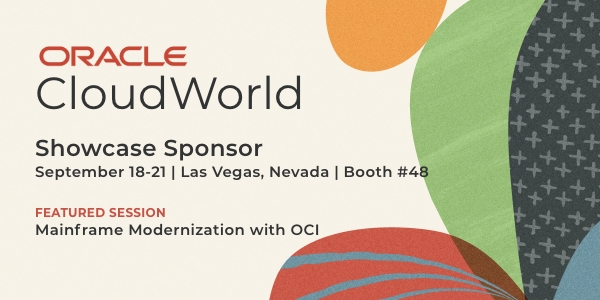
The TSRI team is excited to be a Showcase Sponsor at this year’s Oracle CloudWorld from September 18th through 21st in Las Vegas, Nevada. Join us for a demo session of our automated modernization process, and a fascinating featured session with other industry leaders.
At CloudWorld, you’ll discover the insights you need for success on your most complex software modernization projects and cloud deployment challenges. The conference will be full of opportunities to meet and learn from industry leaders and technology experts to discover what’s new and what’s next for Oracle Cloud Infrastructure when it comes to databases, applications, and much, much more.
SEPTEMBER 20th SESSION
See 99.9X% Automation in Action
Get a look at how TSRI modernizes a mainframe application modernization from COBOL to Java running on Oracle Cloud at the Modernize Mainframe Applications to Oracle Cloud Infrastructure with Confidence session on Wednesday, September 20th at 2:10pm PDT. Scott Pickett, VP of Product Development and Service Delivery, will demonstrate how it’s done with 99.9X% automation. You'll see how TSRI transforms COBOL, CICS, CA IDEAL, JCL, Pl/1, PL/SQL, and more, to functionally equivalent Java and C# .Net Core with migration to cloud, cloud-hybrid, or modern on-premises environments.
FEATURED SESSION ON SEPTEMBER 21st
Modernizing Mainframe Workloads to OCI
Find out how TSRI clients have achieved 80-90% TCO savings on mainframe modernization. Join Oracle and TSRI on Thursday, September 21st at 9:05 am PDT for a Featured Session on Mainframe Modernization with Oracle Cloud Infrastructure. René Wagner and a panel of Oracle partners will share strategies and patterns for modernizing and refactoring mainframe applications to modern environements, including hybrid and Oracle Cloud Infrastructure (OCI). You’ll learn options and strategies that can cut costs and mitigate risks associated with mainframe migration to the cloud.
Reserve a Personal Genius Bar Session
To receive a more personalized walkthrough, check out our demo session, Cloud for Mission-Critical: Mainframe Offload. Register on the Oracle Events App to join René Wagner at the Genius Bar in the Hub on Wednesday, September 20th from 5-6pm. While you can walk up to the Genius Bar during the session, spots are limited to four attendees at one time per session, so we recommend that you pre-register in advance to avoid missing out.
Stop by Booth #48
Any time during the conference, the TSRI team will be ready and eager to share industry knowledge, successful modernization strategies, and opportunities for partnership. We look forward to seeing you in person at Booth #48 to ensure that every software modernization is done professionally, with full accuracy, assured functional equivalence, and in a fraction of the time.
Meet Us at the Conference!
SCHEDULE NOW
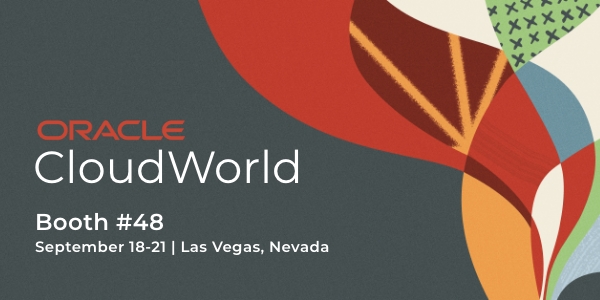
In a fraction of the time, lower cost, and with no business interruption, TSRI’s JANUS Studio® automates the transformation and refactoring of software applications to cloud environments. Our industry-leading reputation for success includes mission-critical mainframe applications for military, government, and private sector organizations.
---
Proven by decades of results. Prove it for yourself.
For decades, TSRI clients have been discovering a dramatically faster, more accurate, and less expensive automated modernization process. We’ve earned a place as the go-to resource for enterprise corporations, government, military, healthcare, and more. Now prove it for yourself. Find out how the proprietary TSRI modernization process delivers future-ready, cloud-based code in any modern language in a fraction of the time.
See Case Studies
Learn About Our Technology
Get Started on Your Modernization Journey Today!
- mainframe
- documentation
- migration
- modernizationjourney
- technology
- whymodernize
- revolution
- software
- modernization
- Microservices
- cloud
- cloudcomputing
- devops
- continuousmodernization
- mainframetocloud
- mainframemodernization
- cloudmodernization
- productivity
- it
- automation
- automatedmodernization
- oraclecloudworld2023
- oraclecloudworld
- oracle
Highlights From MITS 2023

AN AIR FORCE FOCUS ON AUTOMATION
Face to Face with Our Air Force Counterparts
This year’s AFCEA MITS conference in Montgomery, Alabama, was a fantastic experience. The TSRI team was delighted to spend quality time with this community of long-time partners, the U.S. Air Force, and other military leaders. It gave us an in-person opportunity to deepen established relationships and help strengthen our understanding of the Air Force’s critical goals and initiatives. The panel sessions and discussions reflected the impressive intelligence, passion, and dedication of the Air Force and our industry colleagues.
This year we were proud to sponsor the conference to help advance the military’s mission and the education of the future technology workforce through AFCEA’s yearly charity golf tournament and President’s Breakfast.
Conversations on the Green
The golf tournament and breakfast held the day before the conference offered an excellent opportunity to build new relationships and strengthen existing ones in a fun setting. René Wagner, our Director of Business Development, says, “It was very exciting to talk with our partners about how they're feeling about the industry and about our common goal of helping the Air Force.”
Our sponsorship helped AFCEA raise over $127,000 for schools and universities through the Montgomery AFCEA Chapter Education Foundation. The money will go to promote IT integration in classrooms across Alabama’s River Region by providing students and teachers with scholarships, grants, equipment, and awards to support technical workforce development.
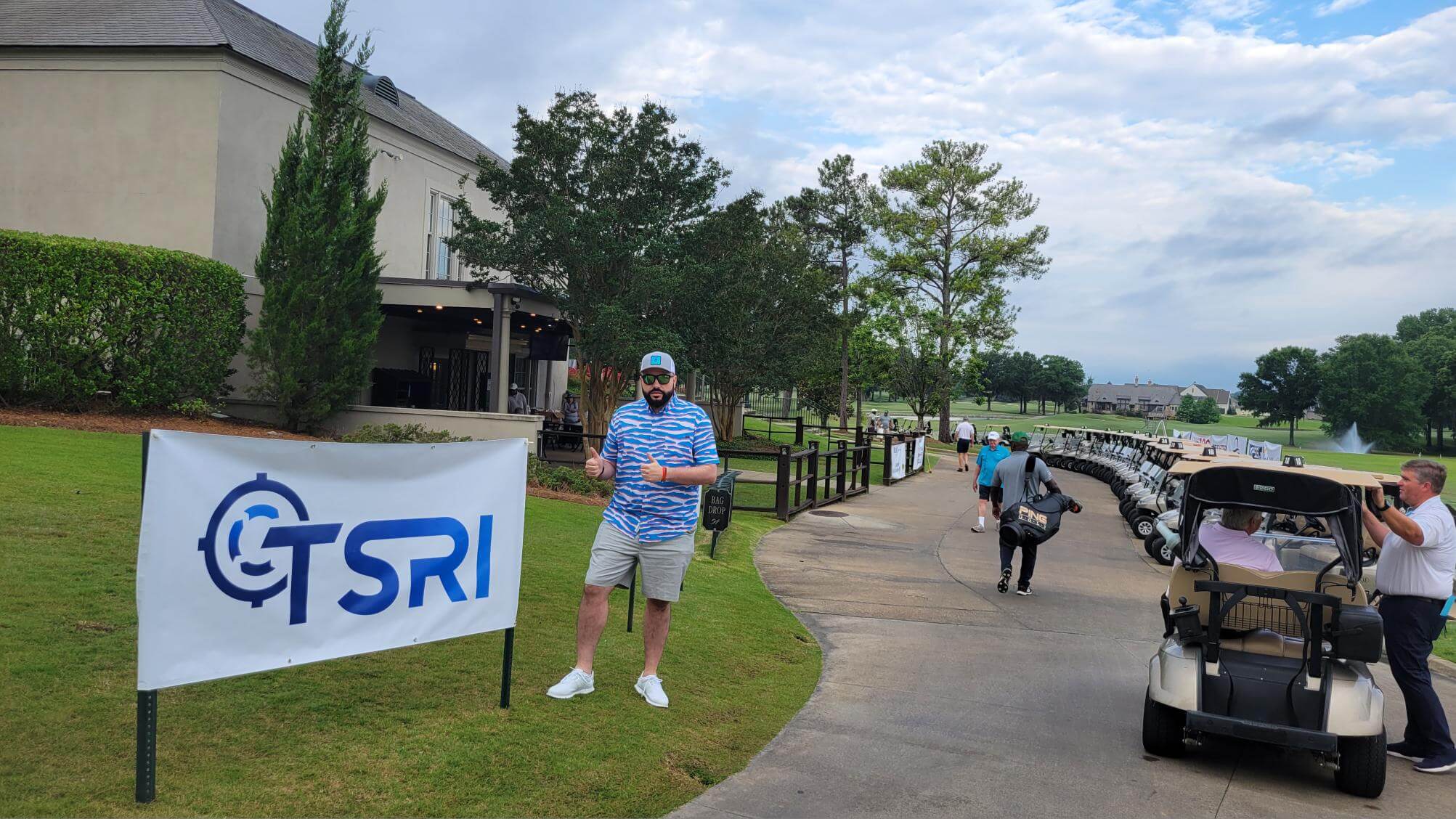
Insights from the Main Event
With around 700 attendees, the 2023 MITS conference provided a focused forum for in-depth discussions with the Air Force about their critical IT goals. This year’s conference theme was the “Unwavering Drive for Automation,” a natural fit for TSRI’s automated architecture-driven software application modernization and refactoring solution. Our approach consistently achieves over 99.9% automation, meeting and exceeding Air Force typical expectations of 60% or 70% automation, at minimum. In addition to the time and money TSRI’s high automation solution can save organizations, our iterative refactoring process improves code quality and increases applications' speed, security, readability, and scalability.
Throughout the conference, we heard new ideas for business, mission, and IT automation, and we shared how, at TSRI, we leverage automation at every step of the software modernization journey. In conversations with our partners and USAF customers about the continued success of TSRI’s application modernization solution and process, we gained valuable insight into what sets our approach apart. Beyond our technical solution, these conversations highlighted the importance of our comprehensive planning, diligent expectation setting, and expertise in post-modernization operational change management.
“I’ve been living and breathing the Air Force logistics modernization strategy and struggle for over a decade.” Says Greg Tadlock, TSRI’s Vice President of Sales, “At MITS, what I learned was continued reinforcement that we're on the right track. That what we're offering customers is the right solution.“
Taking Center Stage
“The single greatest moment at the event, for me,” says Greg, “was the full auditorium as René introduced TSRI at the beginning of the automation panel. You can only imagine…for a small company like TSRI, it felt like a big moment.” The panel discussion addressed some of the central questions of automation, such as which business and technical processes make sense to automate and what level of automation is feasible to run critical operations more efficiently for the Air Force and other military organizations. The panel discussed familiar and innovative automation tools and methodologies, including new AI technologies.
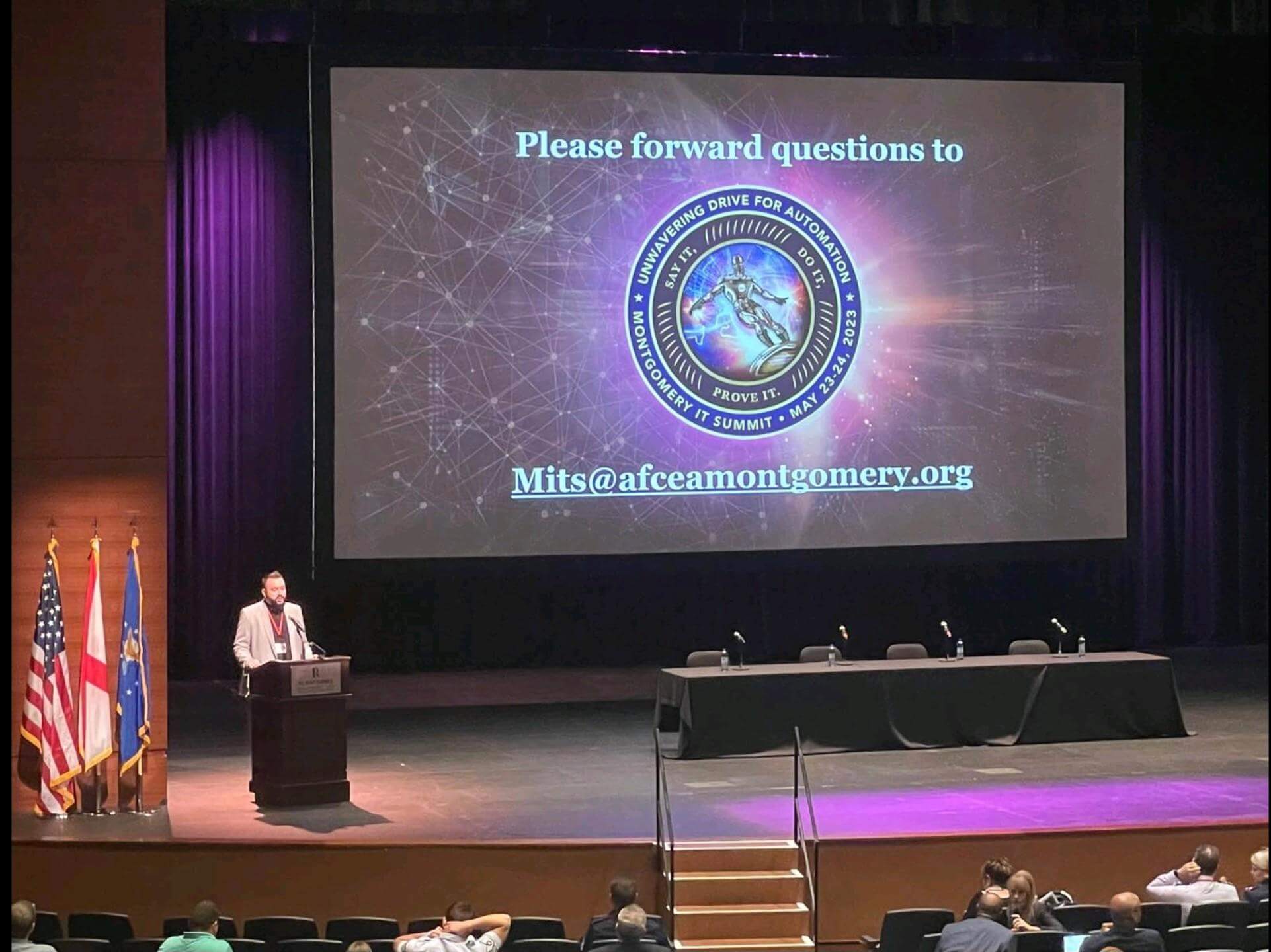
Hot Topics: Platform Selection and Cyber-Resilience
In addition to automation and AI, another major topic of conversation was cloud infrastructure and platform migration for military systems. To achieve the high levels of security, performance, and maintainability required of military IT solutions, our Air Force customers need to identify and configure the optimal environments for their systems. Paul Saladna, an Enterprise Architect at NTT Data, responsible for the Air Force’s large and very successful SBSS ILS-S project, speaks to this question in our recent webinar. Do you go with a particular cloud platform based on your systems language or database type? Or do you choose by the server or operating system? In many cases, it’s not a simple, formulaic decision.
As more Air Force and other military systems are migrated to the cloud, several considerations exist in the choice and configuration of their target environments. Cyber-resilience is near the top of the list, as is scalability and the ease of system maintenance. There’s not one “if-System-A-then-Target-B” answer, which made our conversations at MITS all the more interesting and informative. With the Air Force tackling several new initiatives, now is the perfect time to engage in these critical discussions. TSRI consults with our partners and customers to help select cloud environments and configure optimal architectures for each application.
START YOUR MODERNIZATION JOURNEY WITH A TSRI CONSULTATION.
Many thanks to the Air Force and AFCEA for another great MITS!
Greg summed up our feelings about the MITS event: "It was an honor to participate with such an influential group of folks at the Air Force. It was great to get a chance to understand their needs and truly introduce TSRI’s full capabilities.” We look forward to next year and the rewarding initiatives and breakthroughs we’ll tackle with our partners and military colleagues until then!
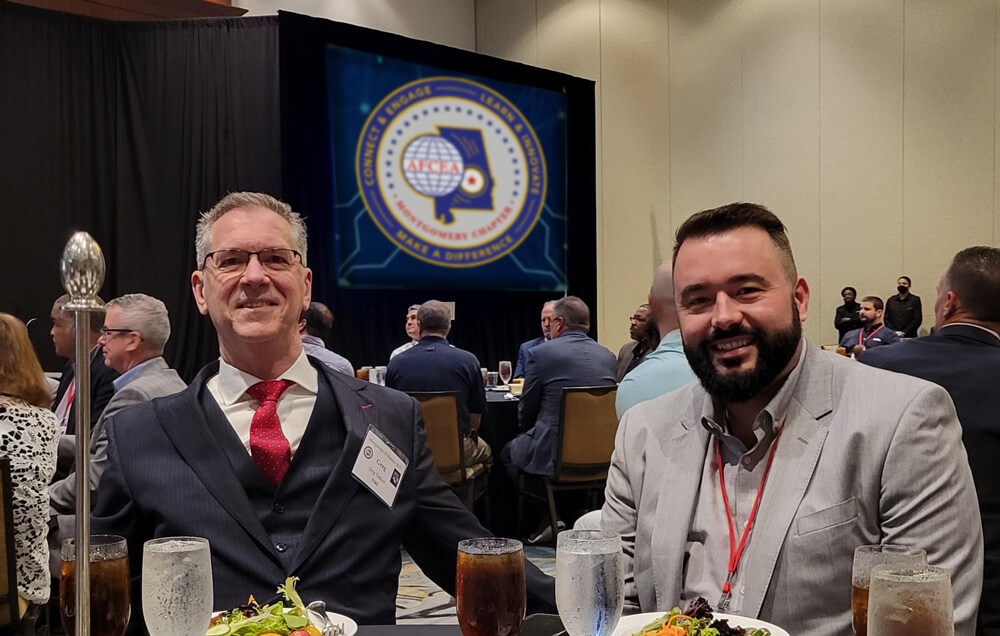
---
Proven by decades of results. Prove it for yourself.
For decades, TSRI clients have been discovering a dramatically faster, more accurate, and less expensive automated modernization process. We’ve earned a place as the go-to resource for enterprise corporations, government, military, healthcare, and more. Now prove it for yourself. Find out how the proprietary TSRI modernization process delivers future-ready, cloud-based code in any modern language in a fraction of the time.
See Case Studies
Learn About Our Technology
Get Started on Your Modernization Journey Today!
- mainframe
- documentation
- migration
- modernizationjourney
- technology
- whymodernize
- revolution
- software
- modernization
- Microservices
- cloud
- cloudcomputing
- devops
- continuousmodernization
- mainframetocloud
- mainframemodernization
- it
- MITS
- afcea
- AirForce
- automation
- dotheimpossible
- MITSgolf
- automatedmodernization
- productivity
- infrastructure
- MITS2023
- cloudmodernization
- usaf
Let's Meet at MITS!
TEEING OFF FOR AUTOMATION AT THIS YEAR'S AFCEA EVENT IN MONTGOMERY
“Unwavering Drive For Automation.” That’s the theme for this year’s AFCEA MITS (Armed Forces Communications and Electronics Association, Montgomery Information Technology Summit.) And we couldn’t agree more.
It’s no wonder TSRI is a Platinum Sponsor of MITS this year; we’re always innovating to enable greater automation. So if you’re attending MITS, we would love a chance to get together. And don’t miss our Automation Panel Discussion on May 24 moderated by Matt Roberts, AFLCMC/GB DAFBOT. We’ll also be at the Industry/Government Exchange Breakfast Reception on Monday morning. Look for us at either place if you’re going.
To further support our commitment to innovation through teamwork with the Air Force, TSRI is proud to be a MITS Golf Sponsor this year. If you’re going to the tournament, let’s meet up on the fairway. Just drop Greg Tadlock or René Wagner a line and we can coordinate a face-to-face meeting.
ON THE FAIRWAY OR IN THE CONFERENCE ROOMS.
Let's Meet at MITS.
TSRI Automation Panel Discussion
May 24, 08:50 – 09:50 CT
TSRI Golf Sponsorship
Contact Greg Tadlock or René Wagner to connect on the fairway.
On a Mission to Automation
Our long-standing relationship with the US Air Force began in 1995 with the Defense and Finance Accounting Services (DFAS) contract management system, MOCAS, and in our 10 Air Force projects since we’ve consistently aligned our efforts to support their vision of a force “Powered by Airmen, Fueled by Innovation,” modernizing some of the Air Force’s most mission critical systems.
From our modernization of the challenging Air Force AFLCMC SBSS ILS-S—known as “The Beast”— to our current work modernizing the 4-million line Stock Control System, with our partner Definitive Logic, we’ve consistently delivered success. Some of our successful past projects modernizing Air Force systems include:
— Weather monitoring—Weather Data Analysis Capability (WDAC)
— Tactical and strategic multiservice satellite management—MILSTAR (Military Strategic & Tactical Relay
— Reporting systems for equipment maintenance data—The Reliability & Maintainability Information System (REMIS)
— Tracking combat capability and impending parts problems—Weapon System Management Information System (WSMIS),
— Financial cost tracking—WSCRS Weapons System Cost Retrieval System
Let's Touch Base
If you’re going to be at the MITS conference, let’s meet at the session, on the greens, or in-between! Drop us a line at iThis email address is being protected from spambots. You need JavaScript enabled to view it. and let’s set up a time to talk about transforming the impossible into the everyday.
---
Proven by decades of results. Prove it for yourself.
For decades, TSRI clients have been discovering a dramatically faster, more accurate, and less expensive automated modernization process. We’ve earned a place as the go-to resource for enterprise corporations, government, military, healthcare, and more. Now prove it for yourself. Find out how the proprietary TSRI modernization process delivers future-ready, cloud-based code in any modern language in a fraction of the time.
See Case Studies
Learn About Our Technology
Get Started on Your Modernization Journey Today!
- mainframe
- documentation
- migration
- modernizationjourney
- technology
- whymodernize
- revolution
- software
- modernization
- Microservices
- cloud
- cloudcomputing
- devops
- continuousmodernization
- mainframetocloud
- mainframemodernization
- awscloud
- cloudmodernization
- infrastructure
- productivity
- it
- MITS
- afcea
- AirForce
- automation
- dotheimpossible
- MITSgolf
- automatedmodernization
Advancing Modernization
DEFINING AND ADVANCING THE FUTURE OF MODERNIZATION
The TSRI team is dedicated to removing the barriers to innovation. We are constantly talking with experts across a broad range of industries, from military to private enterprises to cloud providers, about what modernization means to their organizations, what is coming next in the field, and how they can take advantage of this technology.
In this post, we summarize three topics we hear consistently from customers and partners: the meaning(s) of “modernization”; the motivation to modernize; and how the process has become a movement.
1. What We Mean When We Say "Modernization"

We find people have varying understandings of the phrase “software modernization” depending on their position, needs, and priorities. Options under this umbrella term include line-by-line code conversion, rehosting to a cloud environment, and manual code and architecture refactoring. Really any form of digital transformation, manual or automated, that moves workloads off the mainframe. The Gartner IT Glossary defines Application Modernization Services even more broadly:
“Application modernization services address the migration of legacy to new applications or platforms, including the integration of new functionality to provide the latest functions to the business. Modernization options include replatforming, rehosting, recoding, rearchitecting, reengineering, interoperability, replacement and retirement, as well as changes to the application architecture to clarify which option should be selected.”
Regardless of the terminology, most long-standing organizations understand that it is critical to modernize applications in order to remain competitive. With this rapidly evolving and increasingly necessary industry, it can be a challenge for decision-makers to find and understand their options. At TSRI, our modernization approach simply includes all of it, code, database, architecture, and UI, even CI/CD protocol, while also refactoring for improved quality and performance. And we automate the process at every step of the way for higher rates of accuracy and efficiency; modernizing 100% of the code, the database, and user interfaces from source to target at 99.9X% automation. TSRI’s automated transformation and refactoring uses a unique iterative methodology to not only translate source code into modern languages, but also to improve the quality of the code and optimize the architectures for a modern computing environment in the cloud (or whatever location is right for your application, including on-prem, hybrid, and embedded environments). Our process results in improved application maintainability, readability and performance while reducing security vulnerabilities and technical debt. With automated and intelligent processes, TSRI saves customers time, money, and resources by achieving measurable improvements in weeks instead of months, or years.
Read about our modernization process
2. Top-Down Drivers of Modernization
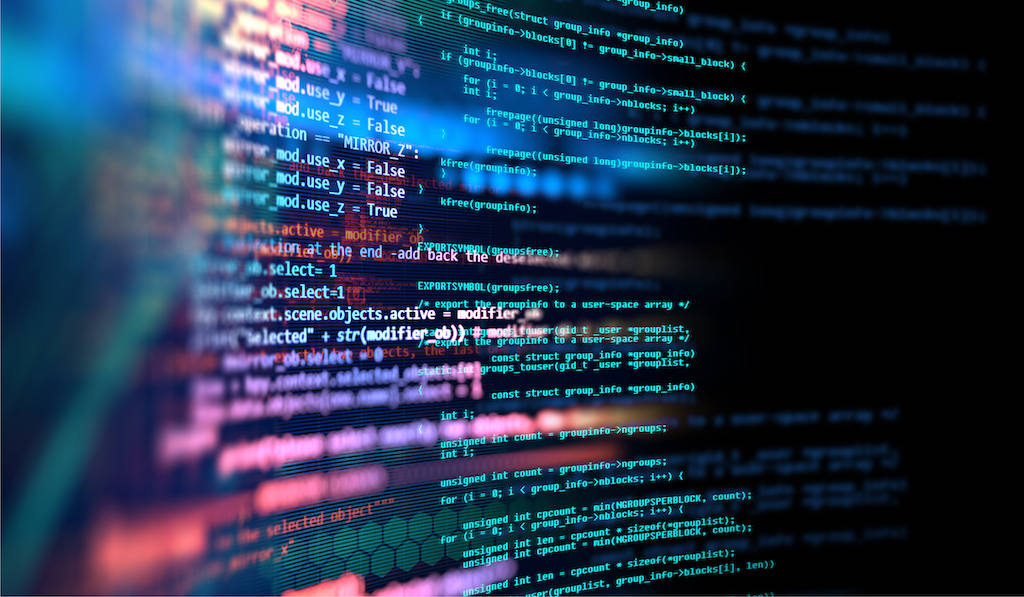
Look into most Fortune 500 companies and you will find mission-critical applications in need of modernization, 70% according to AWS. Many executives and CEOs are pursuing strategic modernization plans for their organizations over the next few years. Additionally, among the hundreds of technical stakeholders the TSRI team has engaged with in recent months, many director level IT professionals have been instructed by their organization's leadership to begin prioritizing modernization initiatives, if they are not already. It is clear that application modernization is not something that is going to happen in the future — it is necessary now.
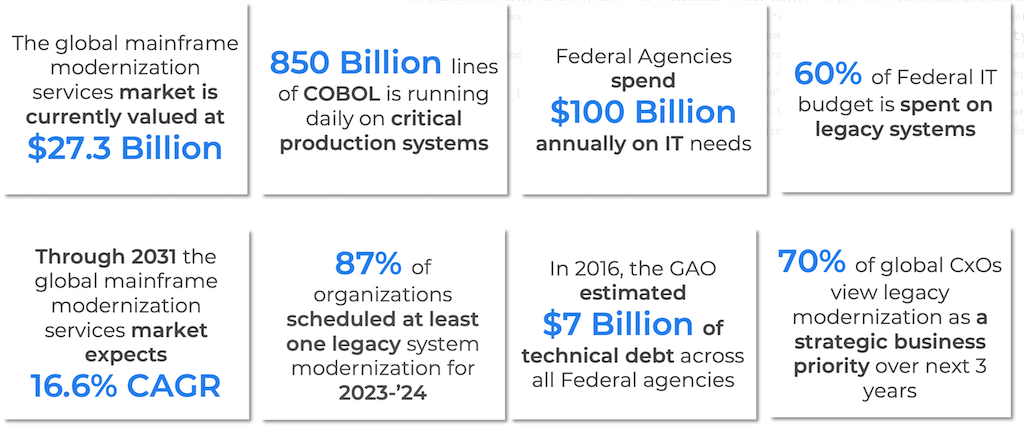
Many of our customers are surprised to hear TSRI has been using an automated process to modernize applications for over 28 years already, and that level of experience means our approach is time-tested for success. While we were a pioneer in the field of automated code modernization, mainframe languages have been around well over 65 years, and were designed for a pre-internet world. Now, after 3 decades, the internet has changed the face of every industry, ushering in many changes in how we all do business. As our business models and technologies develop, continuous modernization will be an essential part of ongoing strategic planning for our critical systems, to both utilize modern technologies and identify and avoid liabilities. With the advent of cloud computing in the past decade, modernization now also enables long-standing organizations to take advantage of cloud agility, cost benefits, and scalability.
3. How Code Modernization is Hitting the Mainstream
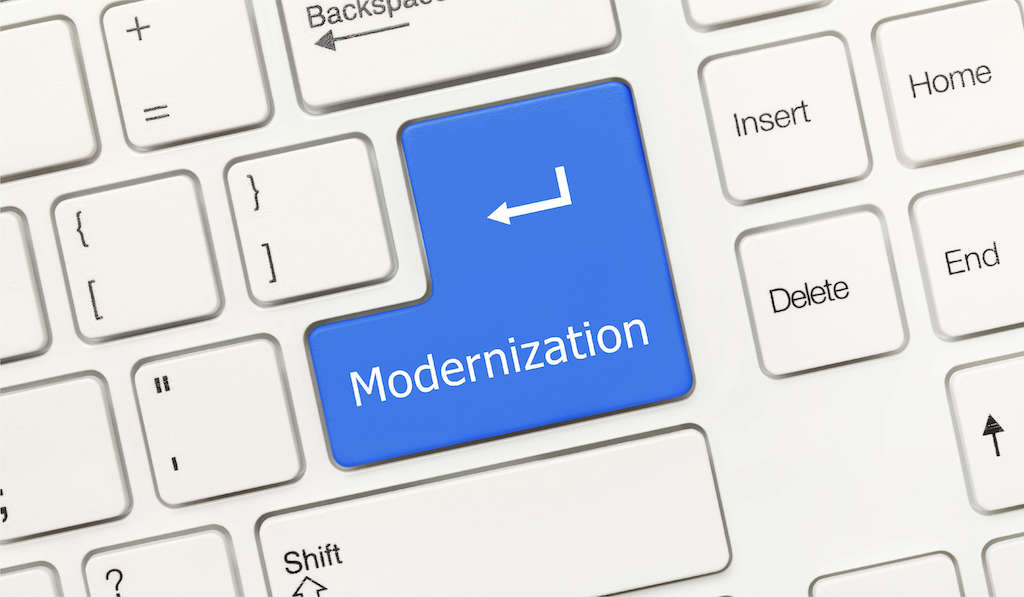
Despite understanding that modernization is a beneficial and necessary endeavor, many companies and organizations—even those with highly sophisticated business models and/or national security responsibilities—are still running their applications written in languages developed during the era of mainframes, like COBOL and PL/1. Today, the level of security and performance in the cloud is finally on par with the well-established capabilities of mainframes, and the advent of cloud computing offers increased operational efficiencies and future technology readiness, along with providing access to new tools and services that enable discovery and remediation of security vulnerabilities not uncovered before. The movement towards modernization and cloud migration may also help organizations avoid costly operational issues, such as those recently faced by the airline industry, where technical debt resulted in business disruption and unfavorable national news coverage.
Some organizations are understandably still hesitant to begin a modernization project, because their systems are relied upon daily to keep critical operations moving and a major modernization project can sound daunting, with concerns of costly downtime, low ROI, and even introducing new risk to mission-critical systems. Thankfully, through TSRI’s highly accurate and automated architecture-driven modernization solution, these companies can overcome technical debt and capitalize on new technological opportunities with low risk and no business disruption. TSRI's model- and rule-driven software modernization solution is very cost-effective, delivering a high ROI while still producing the highest quality application transformations, routinely meeting and exceeding the code quality, security, and performance standards of many safety-critical industries, including Dept. of Defense, Banking and Finance, and Healthcare.
Read about TSRI’s modernization services
We’d love to hear your modernization stories, definitions and questions. Get in touch with us now to keep the modernization conversation going.
---
Proven by Decades of Results. Prove It for Yourself.
For decades, TSRI clients have been discovering a dramatically faster, more accurate, and cost-effective automated modernization process. We have earned a place as the go-to resource for enterprise corporations, government, military, healthcare, and more. Now prove it for yourself. Find out how the proprietary TSRI modernization process delivers future-ready, cloud-based code in any modern language in a fraction of the time.
See Case Studies
Learn About Our Technology
Get Started on Your Modernization Journey Today!
- Accenture. (n.d.). Mainframe Migration. Accenture. https://www.accenture.com/us-en/blogs/cloud-computing/mainframe-migration
- CIO. (2021, August 16). Moving beyond legacy: The C-suite guide to application modernisation. Be Ready. https://be-ready.cio.com/collection/application-modernisation/article/moving-beyond-legacy-the-c-suite-guide-to-application-modernisation
- Tata Consultancy Services. (2022, January 18). Mainframe and Legacy Modernisation Top Priority - TCS Survey. Tata World. https://www.tataworld.com/news/openinside/mainframe-and-legacy-modernisation-top-priority-tcs-survey
- Transparency Market Research. (2022, February 9). Mainframe Modernization Services Market to Expand at CAGR of 16.6%: Rising Need for Modernizing Technology Infrastructure to Boost Global Market, Notes TMR. PR Newswire. https://www.prnewswire.com/news-releases/mainframe-modernization-services-market-to-expand-at-cagr-of-16-6-rising-need-for-modernizing-technology-infrastructure-to-boost-global-market-notes-tmr-301421602.html
- Parrish, T. (2022, February 10). COBOL wants to find out just how popular it really is. TechRadar. https://www.techradar.com/news/cobol-wants-to-find-out-just-how-popular-it-really-is
- Simon, A. (2022, December 12). Shifting left on day one. FCW. https://fcw.com/comment/2022/12/shifting-left-day-one/380823/
- Clark, S. (2022, March 31). Senate HSGAC Approves Legacy IT Reduction Act, Blocks Funding. MeriTalk. https://www.meritalk.com/articles/senate-hsgac-approves-legacy-it-reduction-act-blocks-funding/
- Manyika, J., Chui, M., Miremadi, M., Bughin, J., George, K., Willmott, P., & Dewhurst, M. (2020, May 14). How COVID-19 has pushed companies over the technology tipping point—and transformed business forever. McKinsey & Company. https://www.mckinsey.com/business-functions/strategy-and-corporate-finance/our-insights/how-covid-19-has-pushed-companies-over-the-technology-tipping-point-and-transformed-business-forever
- Konkel, F. (2022, March 31). New bill would mandate legacy IT inventories, modernization plans. Federal News Network. https://federalnewsnetwork.com/congress/2022/03/new-bill-would-mandate-legacy-it-inventories-modernization-plans/
AWS re:Invent 2022: Stack the Cloud Modernization Odds in Your Favor
Going to AWS re:Invent 2022 in Las Vegas? The TSRI team is. The magic number to remember for accelerating and assuring your software modernization projects is 846. That’s our booth at the event where you’ll find our team and hear about our advanced JANUS Studio® solution to modernize your software applications to the AWS cloud.

DON'T GAMBLE WITH SOLUTIONS WHEN IT COMES TO YOUR CODE.
CONNECT WITH THE EXPERTS AT TSRI.
AWS Mainframe Migration Competency Partners
As a vetted and validated AWS Mainframe Migration Competency partner, TSRI provides rapid, low-risk software modernization for deployment on AWS.
Stop by to see how the TSRI team has strategically planned and executed hundreds of successful modernization projects. We’ll be ready to discuss the business and technical details of our modernization solution and answer questions about how TSRI transforms more than 35 different languages operating without code-freeze and business disruption in a graceful, step-wise manner.
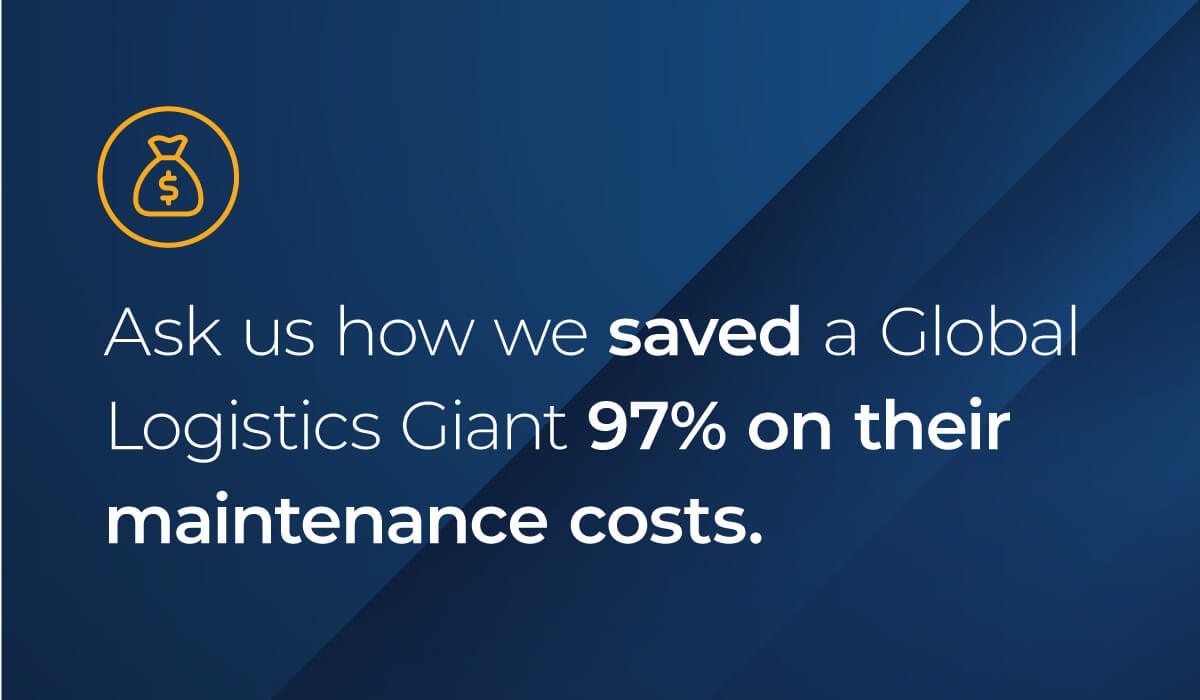
GAIN A FAST ADVANTAGE
AWS ISV Accelerate Program Member
At the booth, you can get a head-start on launching projects from kick-off and execution to ongoing operations on the AWS cloud. Because TSRI has earned membership in the AWS ISV Accelerate Program, we offer prioritized access to the AWS co-sell support team to drive faster adoption of ISV solutions. That means our customers get access to valuable resources that provide guidance to achieve better results through collaboration with the powerful AWS Sales and Account Management organizations.
YOU'VE GOT QUESTIONS
We've got over 250 successful migrations to reference
We speak from experience. TSRI has transformed some of the most secure and mission-critical military, government, and finance systems in the world to full business operations in cloud-ready modern languages. Our team at AWS re:Invent would love to share insights from real-world case studies across a broad range of industries.
— Ask us how we saved Pitney Bowes 97% on their annual Total Cost of Ownership by moving them—without disruption—from COBOL on an HP NonStop Tandem mainframe to a modern C# .NET Core application in production on AWS.
— You might also want to know how it only took six weeks to move the Canada Revenue Agency’s Help Desk application to AWS—while reducing their annual system maintenance costs by 80%.
— While you’re there, find out how we achieved a 99.9996% automation rate in modernizing all but one or two lines of code while transforming Educational Testing Services (ETS) from COBOL and JCL to Java and Python on AWS. That included a high-transaction batch system, DB2 and VSAM to PostgreSQL, as well as a very large number and variety of sort cards that required automation. We would love to tell you how we did it—and show you what we can do for you!

STOP BY BOOTH #846 OR PRE-SCHEDULE YOUR VISIT NOW
We love talking about this stuff. That’s partly why we love AWS re:Invent so much. It’s our chance to meet you face-to-face.
Our team of experts will be available to answer questions about your specific application modernization scenario, provide demonstrations, and share case studies of TSRI’s successful modernization projects spanning government, military, finance, insurance, retail, and many other industries. To get expert one-on-one modernization advice at AWS re:Invent put yourself on our calendar now.
Schedule a Session
---
Proven by Decades of Results. Prove It for Yourself.
For decades, TSRI clients have been discovering a dramatically faster, more accurate, and less expensive AI-based and automated modernization process. We’ve earned a place as the go-to resource for enterprise corporations, government, military, healthcare, and more. Now prove it for yourself. Find out how the proprietary TSRI modernization process delivers future-ready, cloud-based code in any modern language in a fraction of the time.
See Case Studies
Learn About Our Technology
Get Started on Your Modernization Journey Today!
Budget Surplus Is a Dirty Word

In stark contrast to its 2021 numbers, the US Federal Government expects to end this fiscal year (2022) with a surplus of $308 billion dollars according to the Congressional Budget Office. (As opposed to last year’s $226 billion deficit.) While that excess fuels clickable headlines for politicians, it’s not great news if your agency or department uses less budget than you predicted—while possibly falling short of longer term goals such as software modernization.
“Use it, or lose it” is a real thing that has caused Federal Government agencies and departments to lose or cut over $127 billion between 2009 and 2019. In one stark example from 2019, the Department of Defense had to return $80 billion in unused budget.
![]()
The average amount of budget fund cancelation is about 1.6% annually.”
According to the Government Accountability Office, the average amount of budget fund cancelation is about 1.6% annually. While that number doesn’t sound large, it can have an erosive effect on your budget and create a downward trend that can be more difficult to reverse down the road when increases could be genuinely needed. And while the examples above are government figures, the principle is the same in the private sector—or even more tightly policed.
So, what can you do as we near the end of your fiscal year if you find yourself with that ugly surplus—even of a measly one or two percent or less? We’ve got four suggestions for you:
1. NOTCH YOUR ARROWS FOR NEXT YEAR
Take some time to cast ahead to your fiscal 2023 strategy. What updates and improvements would you like to see by the end of next year?

Knowing that you have money in your coffers ahead of time, consider what additional resources, technology, or assistance will help you achieve those goals. Are there moderate investments such as modernization planning that you can make this year that could give you wiggle room should the vagaries of budget and crisis change your situation next year? Are there plans you’d like to lock in now?
As you envision what next year should look like, consider software modernization. One smart use of funds ahead of a modernization project is using the final couple of months of this year to get an assessment for your program. It only took TSRI six weeks to assess the entire AT&T billing system with 961,780 lines of code and comments through our JANUS Studio®, delivering an Application Blueprint® that enabled them to begin the next phases of their modernization more efficiently.
![]()
It only took TSRI six weeks to assess the entire AT&T billing system with 961,780 lines of code.”
2. UPSKILL YOUR TEAM
Professional development does more than grow your organizational toolkit of capabilities; it also helps employee retention during a time of 3.5% unemployment.

In a fascinating 2022 learning and development study, LinkedIn found that the #1 driver of workplace culture (and so, retention) is opportunities to learn and grow. And in a time where languages like COBOL and Ada don’t even rank in the top ten searched languages, training in modern languages can also pay off for your organization. In a Microsoft-sponsored study, IDC found that IT professionals who have achieved a relevant role-based technical certification perform on average 26% better than their uncertified colleagues with the same responsibilities. Certifying your people is worth the investment.
3. UPGRADE YOUR TECHNOLOGY
If you have money left over, it’s a great time to provide your teams with technology that matches both the needs of a more mobile, more connected, and more secure world.

These can be affordable, pointed investments that can pay off with increased productivity, security, and employee satisfaction while positioning your teams to face changing needs. As you consider your options, think in terms of:
Mobility: More powerful and secure laptops and tablets
Business processes: Point of sale for retail, connected medical devices
Cloud computing: New as-a-Service applications, storage devices, and subscriptions
Cybersecurity: Assess and upgrade your current measures
Automation: Software, AI, and services to automate large, repetitive, or formerly impossible tasks
Let’s talk about that last one.
4. GET A FIRM HANDLE ON YOUR CURRENT CODE
Even if you’re not planning on modernizing code, poorly written or undocumented applications that are written in hard-to-understand languages can be a huge IT operating expense for you.
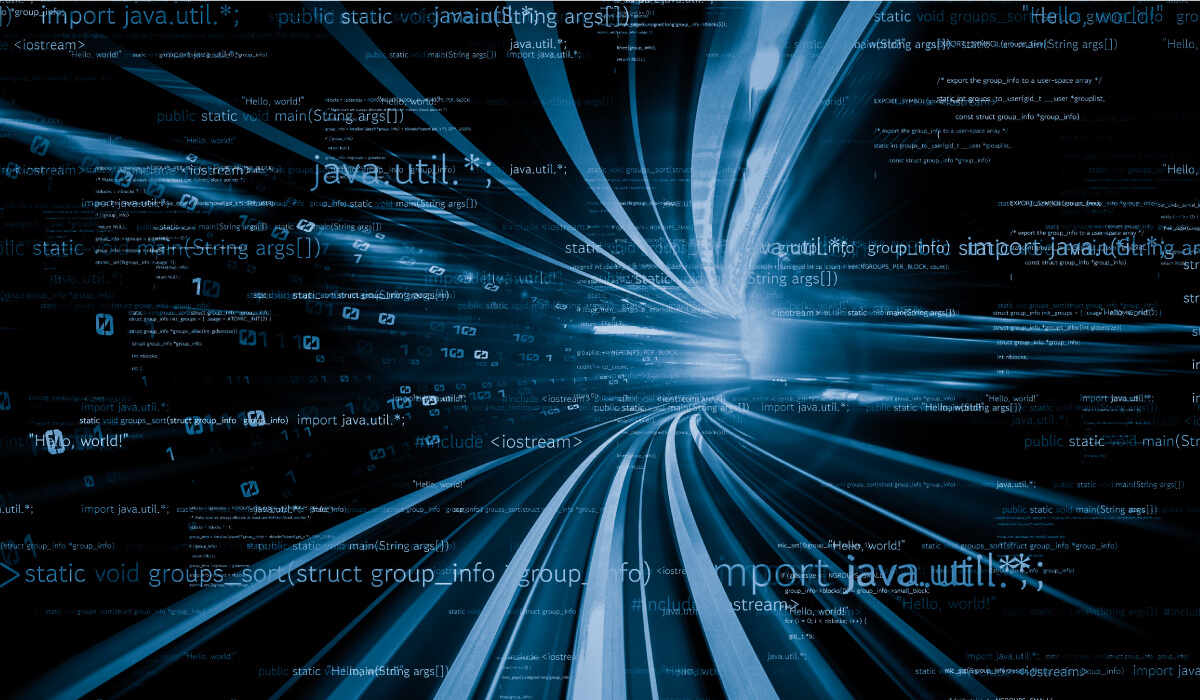
A Harris poll found that developers spend an average of 17 hours a week (42% of their time) dealing with bad code. Basic understanding of code content should be a prerequisite for any software-managing organization: know what’s there. But with millions, or tens of millions of lines of code, that can be very difficult or impossible to do manually.
![]()
Developers spend an average of 17 hours a week (42% of their time) dealing with bad code.”
That’s where TSRI DocsRev makes a powerful investment in all 365 days of 2023—and beyond.
DocsRev is automated code documentation-as-a-Service. It allows users with varying experience levels to quickly familiarize themselves with the structure and flow of the application through easily navigable diagrams, hyperlinking code, and other UML artifacts and graphics. It’s powered by the same automated tools our clients have trusted to document the world’s most critical applications since 1995. Now our technology is available to you as a simply-priced and easy-to-manage service that keeps you up to date on what’s really in your code.
In addition to giving you always-current code documentation, DocsRev apprises you on your application's current complexity, structure, control flow, data flow, similarity, and dead code. All you need to do is upload your latest code baseline to receive complete and detailed documentation.
Trusted by major organizations around the world for application maintenance and development, DocsRev frees you from uncertainty by letting you easily inspect and identify external calls, utilities, and interfaces. DocsRev shows you what your code is actually up to by automatically exposing EXEC statements your application is using such as SQL, CICS, and more.
Let’s Make Your 2023 Budget Process Go Smoothly
Throughout next year and beyond, your code will change based on your needs. To make sure you have the right views into whatever happens in your code, the DocsRev team is continually adding new views, graphs, indices, diagrams, and other features to its documentation set.
---
Proven by Decades of Results. Prove It for Yourself.
For decades, TSRI clients have been discovering a dramatically faster, more accurate, and less expensive AI-based and automated modernization process. We’ve earned a place as the go-to resource for enterprise corporations, government, military, healthcare, and more. Now prove it for yourself. Find out how the proprietary TSRI modernization process delivers future-ready, cloud-based code in any modern language in a fraction of the time.
See Case Studies
Learn About Our Technology
Get Started on Your Modernization Journey Today!
- mainframe
- documentation
- migration
- modernizationjourney
- technology
- whymodernize
- productivity
- it
- infrastructure
- revolution
- software
- modernization
- Microservices
- cloud
- cloudcomputing
- devops
- continuousmodernization
- mainframetocloud
- mainframemodernization
- docsrev
- codedocumentation
- 2022budgetsurplus
- excessbudget
Modernize the code. Keep the brilliance.

How long would it take you to complete 25,000 tasks that take thirty minutes each?
Before you drag out your calculator, that’s 12,500 hours, or about 1,562 working days. Wouldn’t it be better to have it all done in under an hour? That gives you an idea of how refactoring—when done correctly—can accelerate modernization process and deliver accuracy in the range of just one error among 20,000 lines of code. That’s the kind of accuracy that’s needed for critical systems. Let’s talk about how refactoring achieves it so fast.
The refactoring phase of modernization at TSRI takes a project beyond updating the code and database to modern standards and system architecture. Sure, the planning, assessment, transformation, and integration phases of a modernization process get the mass of the work done. But more is needed. Imagine if a great painter only took a portrait to the point of getting the features in the right places. For functional equivalency, high performance, and future-readiness you need to dive into the details to get them as right as the original—and ready for future enhancements and needs.
That’s where refactoring can be hugely beneficial. If, after the transformation and integration phases you have to find and address each issue manually over hundreds of thousands or millions of lines of code, you may as well add those 12,500 or more hours back in. That’s why refactoring is key. By including an iterative code scanning and refactoring phase to the modernization process, TSRI automatically and semi-automatically remedies a host of issues at scale that would make developers run for the hills, including:
- Pinpointing and getting rid of dead or non-functional code
- Merging and consolidating duplicate code and data
- Improving design of code and data
- Eliminating system flaws from transformed software
"TSRI's refactoring process creates reusable components that can be applied to future projects"
And beyond those cleaning and refining functions, a well-designed refactoring process also provides forward-looking advantages. TSRI’s refactoring process improves maintainability, remediates security vulnerabilities, increases performance, and modularizes functionality. It also creates reusable components that can be applied to future projects for optimization, packaging, and redistribution.
When you’re able to reuse some or all of the outputs of automated or semi-automated refactoring, you don’t have to recreate the mechanisms for modern microservices, REST calls, and other reusable elements. They’re at your fingertips and ready for integration in modern environments or databases for future projects. It gives you the best of modularity, but customized and created specifically for your systems’ needs such as data-dictionaries, code and record consolidation, introduction of logging or comments, and more.
"It gives you the best of modularity, but customized and created specifically for your systems' needs."
One scan, one rule, and thousands of fixes
A key part of the refactoring process is scanning the newly modernized code to find issues for remediation. To do this, we use the SonarQube scanning tool. SonarQube is an open-source platform that executes continuous inspection of code quality in modernized code. It provides a detailed report of bugs, code smells, vulnerabilities, code duplications, and more. Once SonarQube has identified problems in the code the TSRI team can use the results to resolve the issues and improve code maintainability issues and security vulnerabilities.
This is where the economy of rules comes in. Once SonarQube has pointed out issues across thousands of lines of code, TSRI uses that intel to identify the types of issues that need to be addressed. When an issue appears once in an application, it often appears hundreds or thousands of times, and a single rule applied across all code can eliminate a host of individual instances.
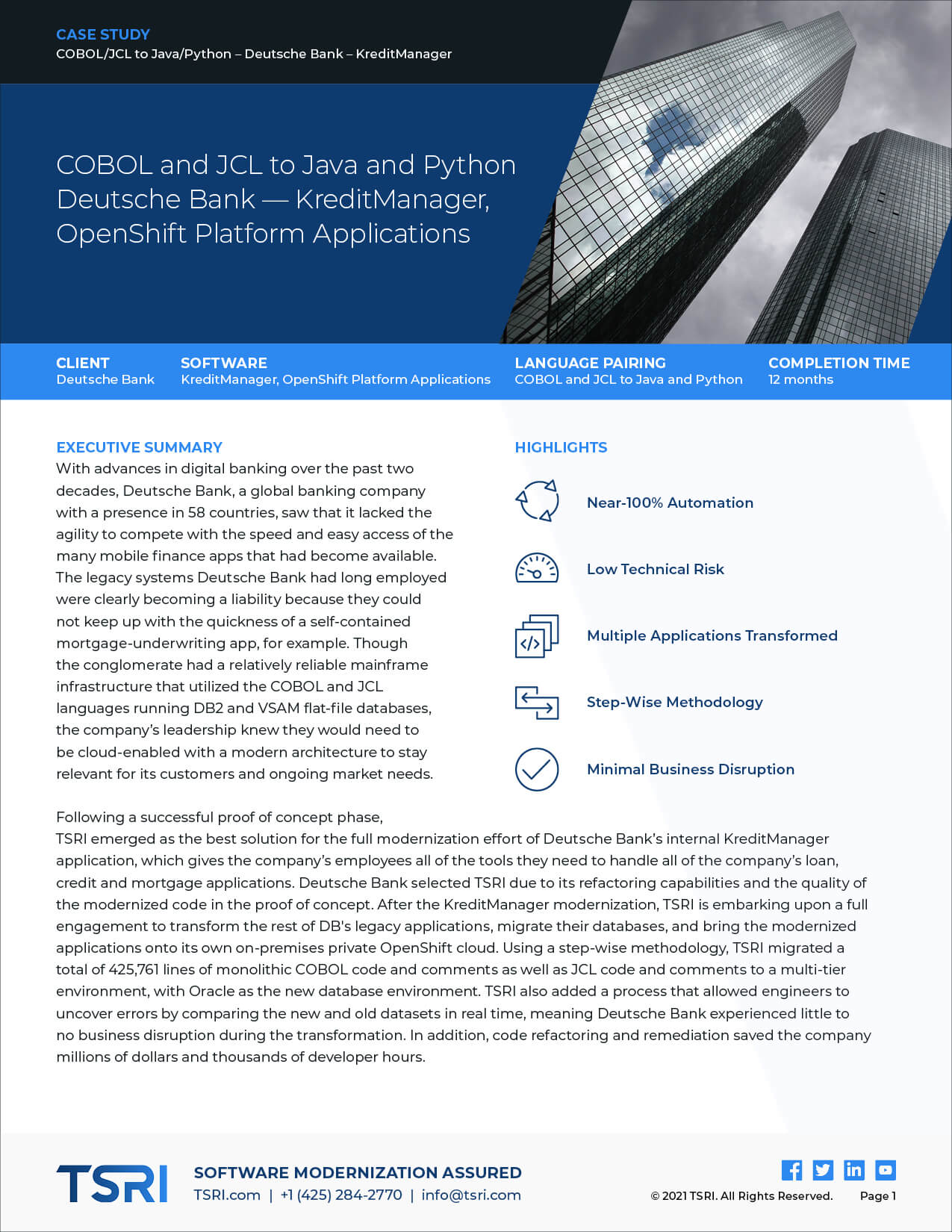 So how did we get to those 12,500 hours we started with? We didn’t just make it up. In a TSRI project for Deutsche Bank, a single rule created based on a scan of the code fixed about 25,000 instances that issue. SonarQube estimated it would take 30 minutes to fix each instance. That means refactoring automated the remediation process and saved them about 12,500 hours of software development time. That’s a lot of Marks.
So how did we get to those 12,500 hours we started with? We didn’t just make it up. In a TSRI project for Deutsche Bank, a single rule created based on a scan of the code fixed about 25,000 instances that issue. SonarQube estimated it would take 30 minutes to fix each instance. That means refactoring automated the remediation process and saved them about 12,500 hours of software development time. That’s a lot of Marks.
The proof is in the work. Refactoring can not only save thousands of coder hours, but a combination of code scanning and refactoring can also uplevel your modernization with:
- Maintainability making it easier to update and manage code going forward
- Readability for modern developers to find and improve the functions they need more easily
- Security by increasing the speed with which security issues can be found and remediated either manually or through refactoring rules
- Performance greatly increasing the efficiency of the application—for instance, enabling multiple services to run in parallel rather than sequentially.
Find out what refactoring done right can do for you, contact TSRI now
----
Proven by decades of results. Prove it for yourself.
For decades, TSRI clients have been discovering a dramatically faster, more accurate, and less expensive AI-based and automated modernization process. We’ve earned a place as the go-to resource for enterprise corporations, government, military, healthcare, and more. Now prove it for yourself. Find out how the proprietary TSRI modernization process delivers future-ready, cloud-based code in any modern language in a fraction of the time.
See Case Studies
Learn About Our Technology
Get Started on Your Modernization Journey Today!
- coderefactoring
- SonarQube
- softwaremodernization
- mainframe
- Refactoring
- documentation
- migration
- modernizationjourney
- technology
- whymodernize
- productivity
- it
- infrastructure
- revolution
- software
- modernization
- Microservices
- cloud
- cloudcomputing
- devops
- continuousmodernization
- mainframemodernization
- automated
- automatedrefactoring
